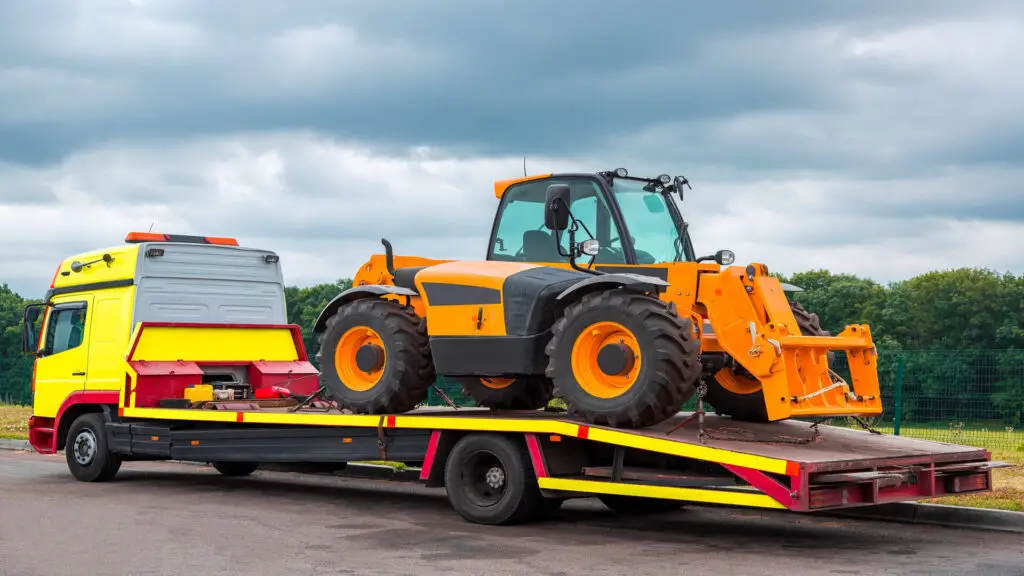Safety is critical when moving any material or equipment. However, it becomes more important when you’re moving heavy equipment and machinery. A single mistake can risk the safety and life of the operators and everyone around them.
To ensure that you have a safe and secure move of heavy equipment and machinery, here are the tips to consider.
- Hire A Mover
Moving heavy equipment and machinery isn’t everyone’s specialty. Even if you own several pieces of heavy equipment, you may not have the resources to move them from one place to another, especially at a distance.
If you think you can’t tackle heavy hauling and might end up creating a mess, it’s strongly advised that you hire professionals to do the job for you. Serious injuries can happen when you try to move heavy equipment without the required training, experience, and tools.
By hiring a professional team, you can rest assured that they can safely move your heavy equipment since they’ve handled many similar moves before. In addition, the best movers have the necessary tools and transport to move your heavy equipment.
Plus, they also have the necessary insurance in place to ensure that you’re protected against liabilities.
- Establish A Strategic Plan
Heavy equipment can be quite troublesome to move. To ensure the efficiency and safety of the move, you’ll need to establish a solid plan before you start moving anything. A clear plan allows you to figure out potential issues ahead of time, determine what kind of equipment you’ll need, assign the moving team, and the routes you’ll need to take.
In general, you need to have a slightly different plan for different equipment since they have varying needs. For instance, high cranes will need a different trailer from smaller bulldozers and loaders. Also, unlike other heavy equipment, higher and larger tower cranes may need a plan for disassembly before transport and assembly once on site.
In addition, you need to understand and follow local regulations. Some cities may not allow the transport of heavy equipment on public roads. Others states will require permits to handle and transport heavy equipment.
- Create A Schedule
Having a plan is one thing, however, not having a proper schedule can make the entire process more complex. A plan can help you know what’s going on, where, and when as well as allocate the assignment. However, scheduling allows you to limit the number of individuals on the scene. This makes it easier to ensure safety and security.
When scheduling your move, make sure to consider the weather conditions to reduce the risk of accidents. Sunny days bring low accident risks compared to rainy or snowy days when the roads tend to be slippery, and drivers may experience low road visibility.
- Provide Workers With Communication Equipment
Effective communication is key to ensuring safe heavy equipment moves. Walkie-talkies or two-way radios come in handy, allowing workers to communicate with each other during a move. This can provide the continuous exchange of information and help monitor blind spots, minimizing safety hazards and risks associated with the move.
- Prepare The Equipment For Transport
Before loading your heavy equipment into a truck or trailer, you need to take the time to prepare and secure it for transportation.
First off, you need to immobilize any wheel components as well as apply the parking brake. Consider adding wedges or chocks against the wheels to secure them in place and prevent movement on deck.

Make sure to cover vulnerable extruding attachments or parts such as knobs, mirrors, and shifts. Always secure or remove loose parts such as doors, preventing them from opening and causing safety hazards and damage while on transport.
It’s also recommended that you empty all fluids, including fuel, from your heavy equipment. This reduces the risk of leaks and fire hazards.
- Use The Appropriate Clothing
It’s important to always dress for the occasion. And in terms of heavy equipment moving, the proper dress code can help save lives.
For instance, baggy pants and loose shirts may cause serious accidents if they get caught in machines and cause you to fall or trip. The same goes for wearing any type of jewelry that can hinder your mobility.
In addition to preventing accidents, wearing the proper clothing with high visibility can ensure that workers are easily seen and noticed, especially in the dark.
Takeaway
Moving heavy equipment is no easy task. It’s imperative that all safety measures are taken into consideration to prevent any mishap and that no life is endangered in any way. Make sure to consider the above tips before beginning with the task of moving your heavy equipment to avoid any mishap or disaster.